You probably wouldn’t expect it, but almost 1 in 4 students between the ages of 12 and 18 say they were bullied at school just last year. And it gets worse, with nearly half of those incidents happening right in the classroom, sometimes just a few feet away from an adult who never saw it coming.
With this article, we’ll analyze what bullying at school really looks like.
If you’re writing about this topic or doing a research paper on bullying, WriteMyEssay will help you with writing support.

General School Bullying Statistics
Bullying has evolved from notes passed in secret and whispered jokes to something sharper, quieter, and constant. It can happen right in front of a teacher’s desk or inside a phone tucked under a hoodie.
What hasn’t changed is the fear students carry with them.
Right now, nearly a quarter of students ages 12 to 18 say they’ve been bullied. That’s not rare. That’s one in every fourth desk in a classroom. The most recent school bullying statistics show us something we already feel in our gut, that this isn’t just a part of growing up.
Parents Are Still Losing Sleep Over Bullying
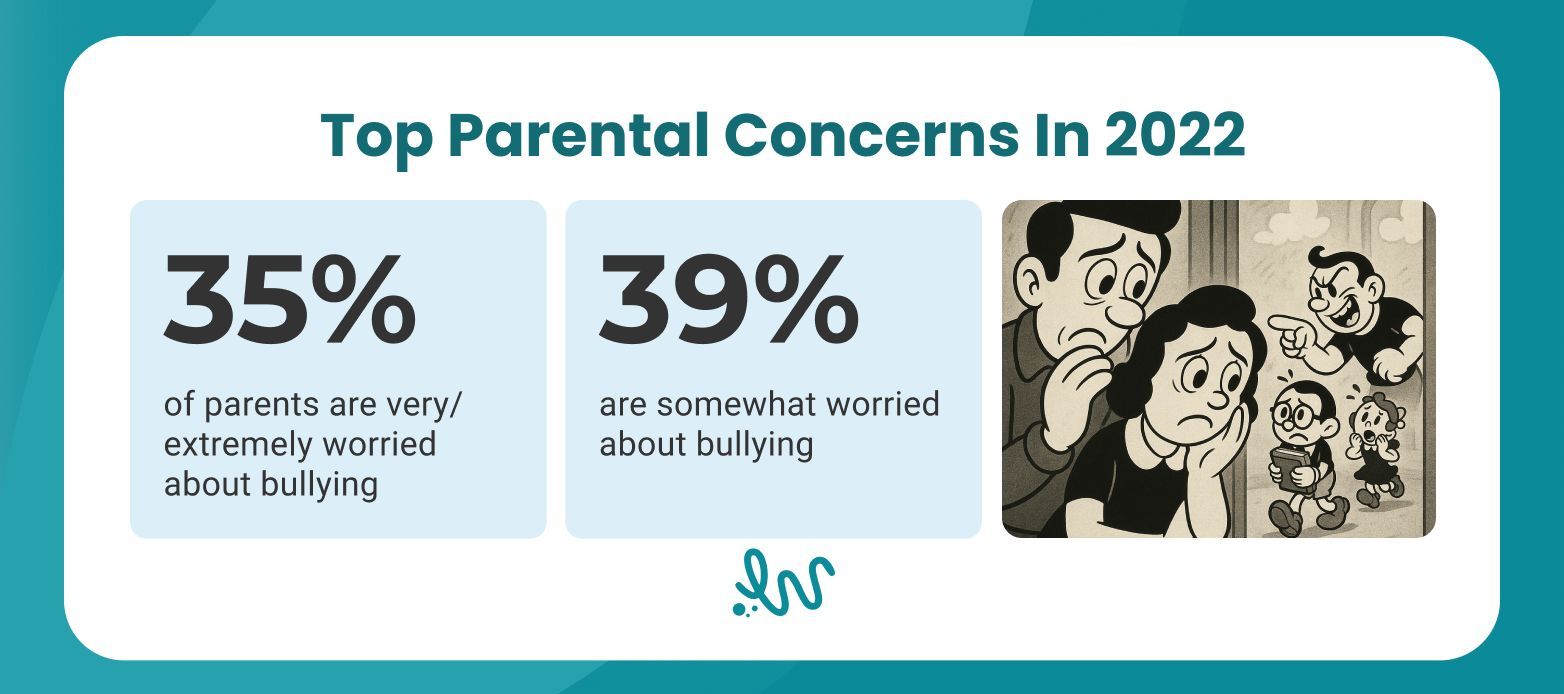
It wasn’t the pandemic, gun violence, or slipping grades that ranked highest in a 2022 national survey of U.S. parents. It was anxiety. And just beneath that, bullying. More than a third of parents said they were deeply worried about their child being bullied. And nearly four in ten parents are at least somewhat worried.
The Classroom Isn’t a Safe Zone
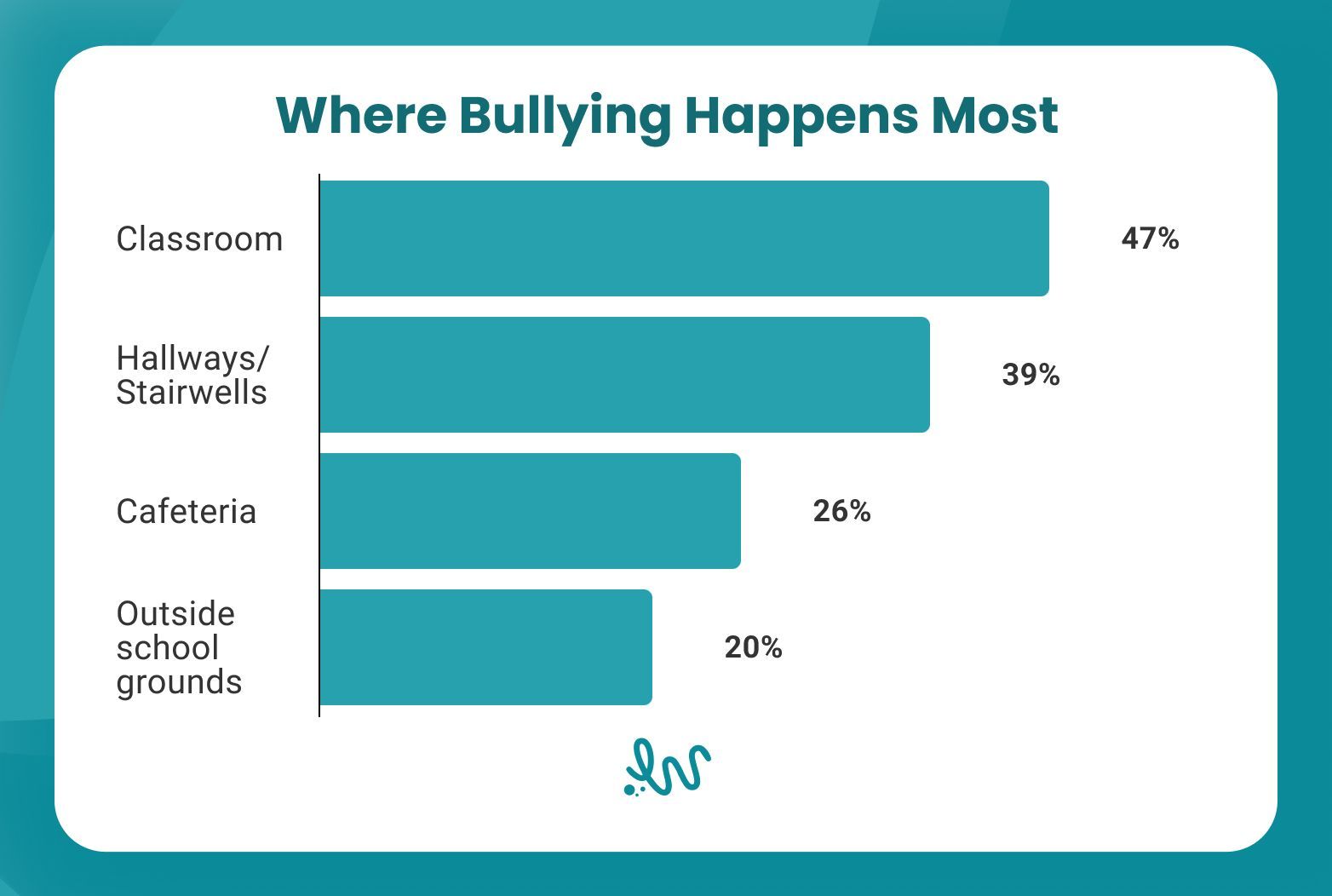
Here’s something you might not expect: the number one place students say they’re bullied isn’t the bus stop or the locker room. It’s the classroom. And what’s even worse, almost half of bullied students said it happened just a few steps away from a teacher. What’s supposed to be a safe space for teens is where the worst moments actually happen.
LGBTQ+ Students Carry Twice the Risk
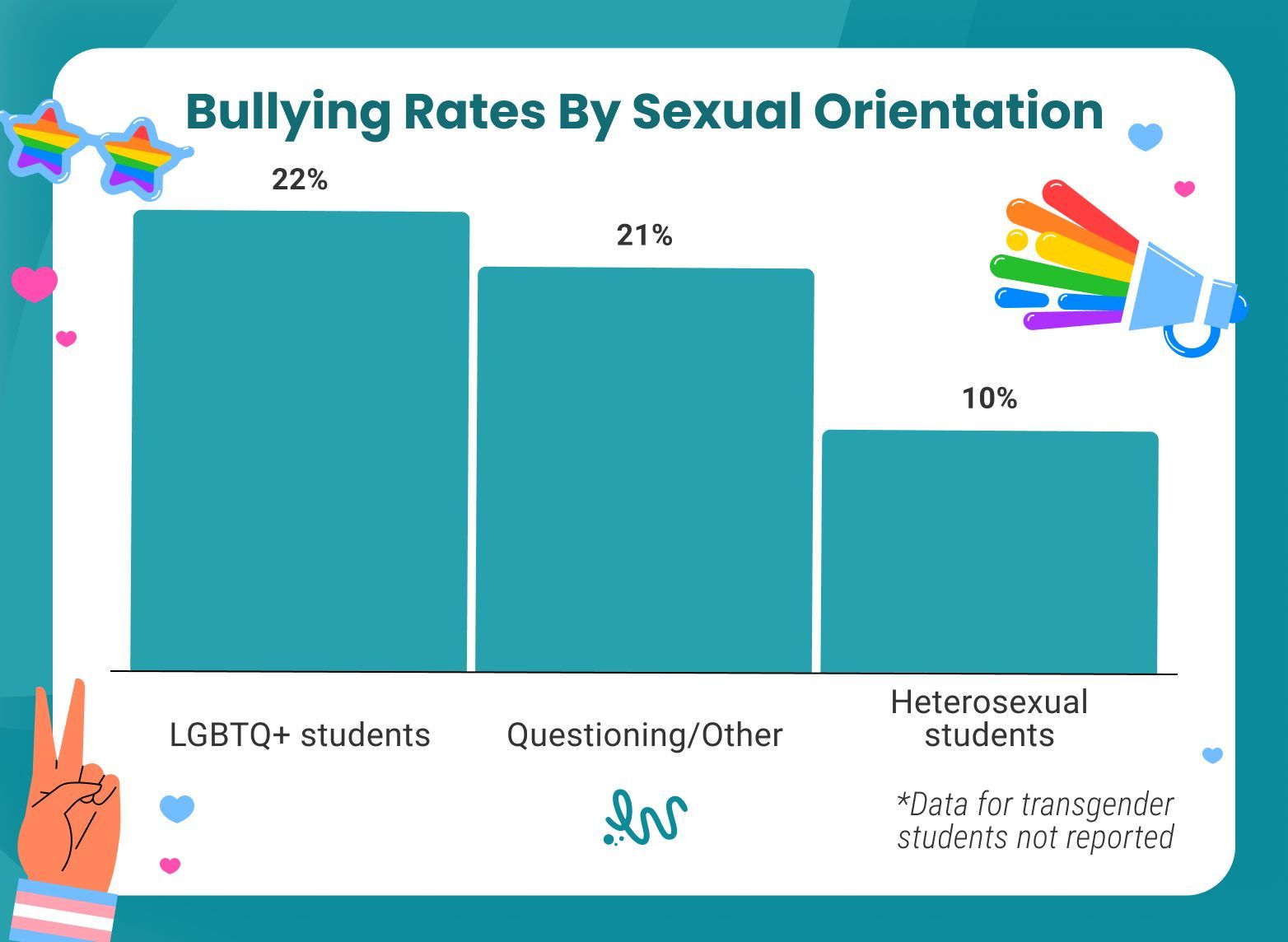
The CDS’s most recent data shows that LGBTQ+ high school students are twice as likely (even more) to report bullying at school. These numbers reflect an environment where identity itself can feel unsafe. According to the study, twenty-two percent of gay, lesbian, or bisexual students have been bullied, a number that drops to only 10% among heterosexual students. And then there’s something even worse: the data for transgender students wasn’t even collected.
One in Four, And Still Underreported
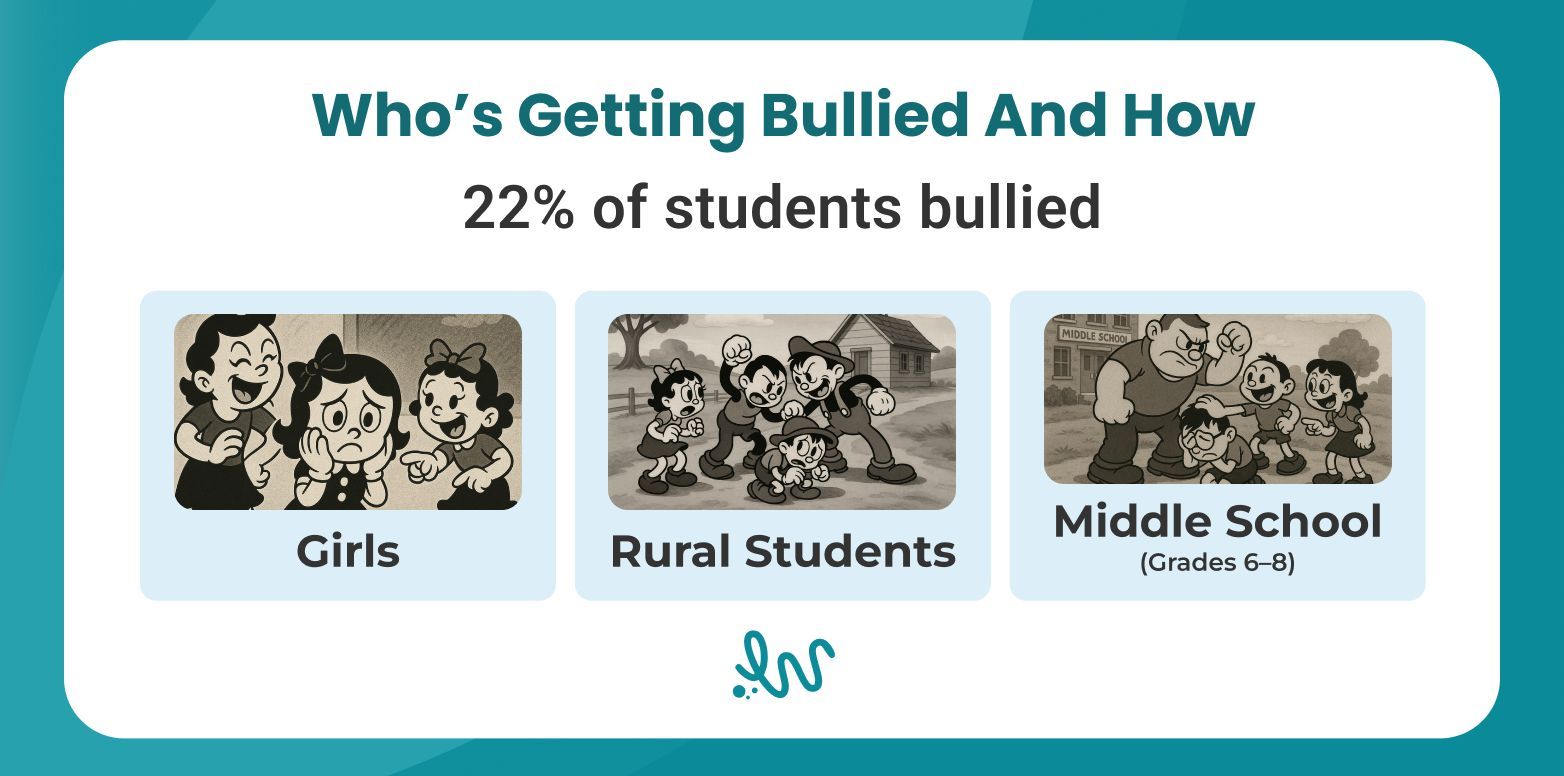
During one school year, 22% of students said they were bullied. Most of them said it happened once or twice, but take a closer look and we’ll see patterns: bullying is more common among girls, students from rural schools, and grades 6 through 8. Many were targeted with rumors. Others were mocked or insulted in ways that were meant to cut deep but leave no bruise. And that’s the thing, so much of this flies under the radar. Even in 2025, we’re still catching up.
Types of Bullying in School
Bullying often shouts, but sometimes it’s quiet, like someone suddenly eating lunch alone. Or that one quiet kid flinching every time their name is called.
- Physical bullying is what most of us picture first, with hitting, shoving, pushing, and kicking. It’s simply meant to be painful, physically.
- Then there’s verbal bullying, the kind that lingers in your head. Being called names until you start to believe them.
- Being left out is what social bullying represents. It doesn’t use fists or insults. It uses silence. Someone gets iced out of a group chat. Or invited last to everything.
- Cyberbullying is the text that ruins your night. The post that spreads faster than you can delete it. The kind that follows you home.
Demographic Breakdown of School Bullying
Bullying often depends on age, gender, and ethnicity. Some students are at a higher risk. Let’s see a demographic breakdown:
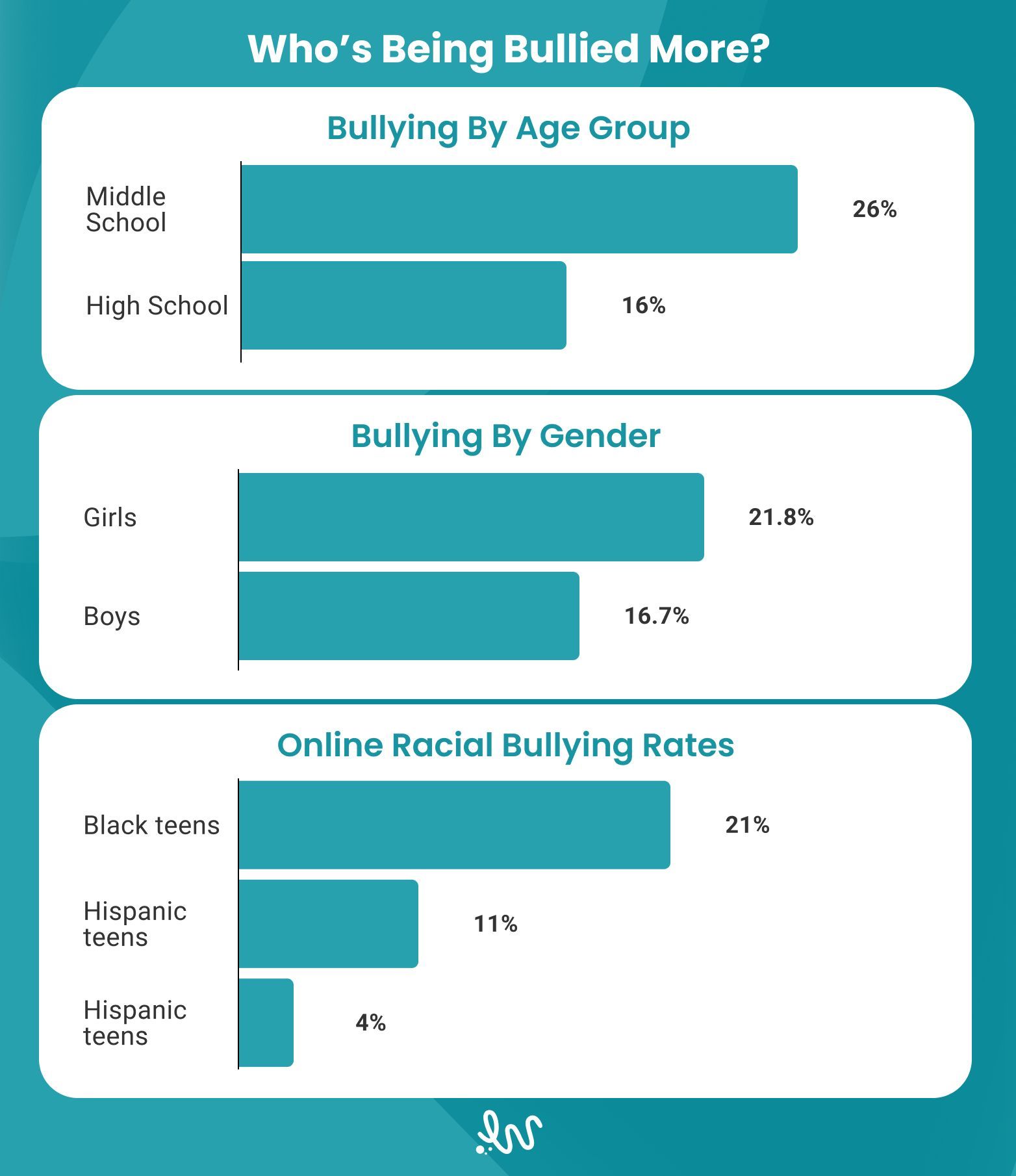
- Age: Middle schoolers are hit the hardest. More than one in four say they’ve been bullied, while the numbers drop to about one in six by high school. That’s still high, but it shows just how tough those middle years can be.
- Gender: Girls also report more bullying than boys. Nearly 22% of female students say they’ve been targeted, compared to around 17% of male students.
- Race/Ethnicity: Black teens (21%) are almost twice as likely as Hispanic teens (11%) or White teens (4%) to report being bullied online because of their race.
Effects of School Bullying
Sometimes bullying in schools looks like a bruise. But more often, it’s invisible. It’s the kid who suddenly asks to stay home. The one who stops speaking up in class. The one who used to love school and now dreads every second of it.
The effects don’t wear off after a weekend. They sink in. In the short term, kids might lose sleep. They might get sick more often. Some start skipping lunch. Others stop turning in homework, not because they forgot, but because everything feels heavier. Like they’re carrying something around that no one else can see.
And when it goes on for too long, that weight doesn’t just disappear. It builds. Students who are bullied often carry that pain with them into later years, into their grades, their friendships, and the way they see themselves. Some lose interest in school completely. Others start believing they don’t belong there in the first place.
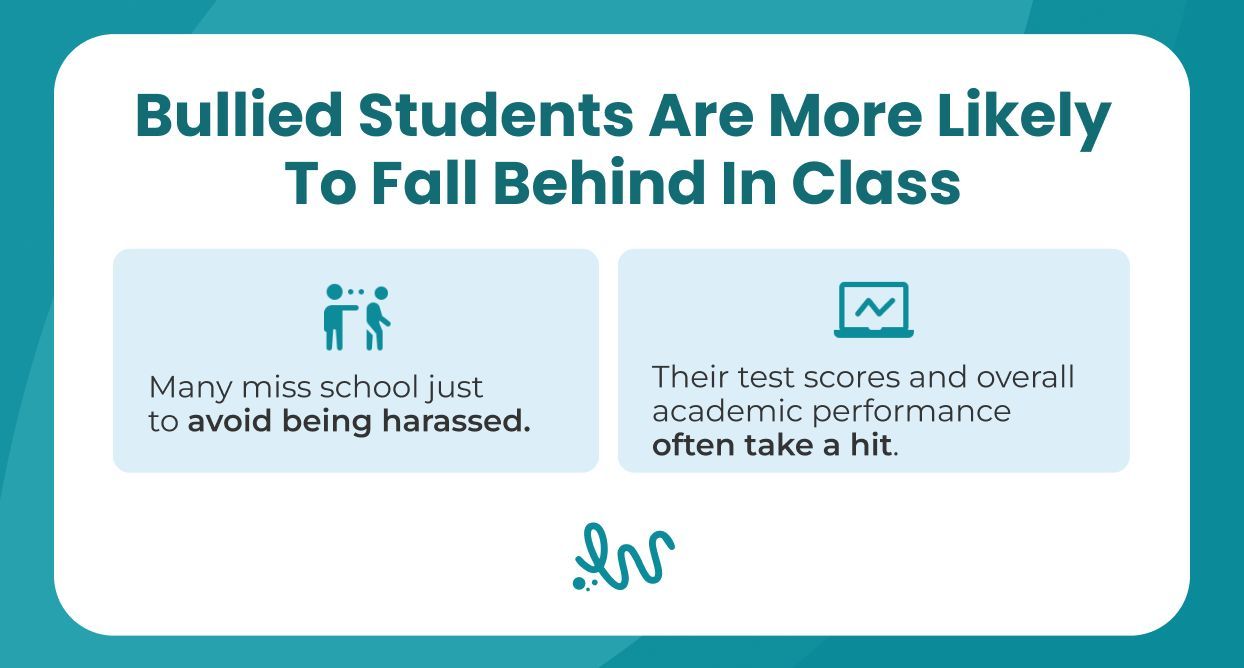
- Bullied students are more likely to fall behind in class.
- Many miss school just to avoid being harassed or turn to online learning (see learning statistics).
- Their test scores and overall academic performance often take a hit.
Cyberbullying in Schools
For a lot of kids, the school day doesn’t really end when they walk out the door. It just moves to their phones. Bullying follows teens home.
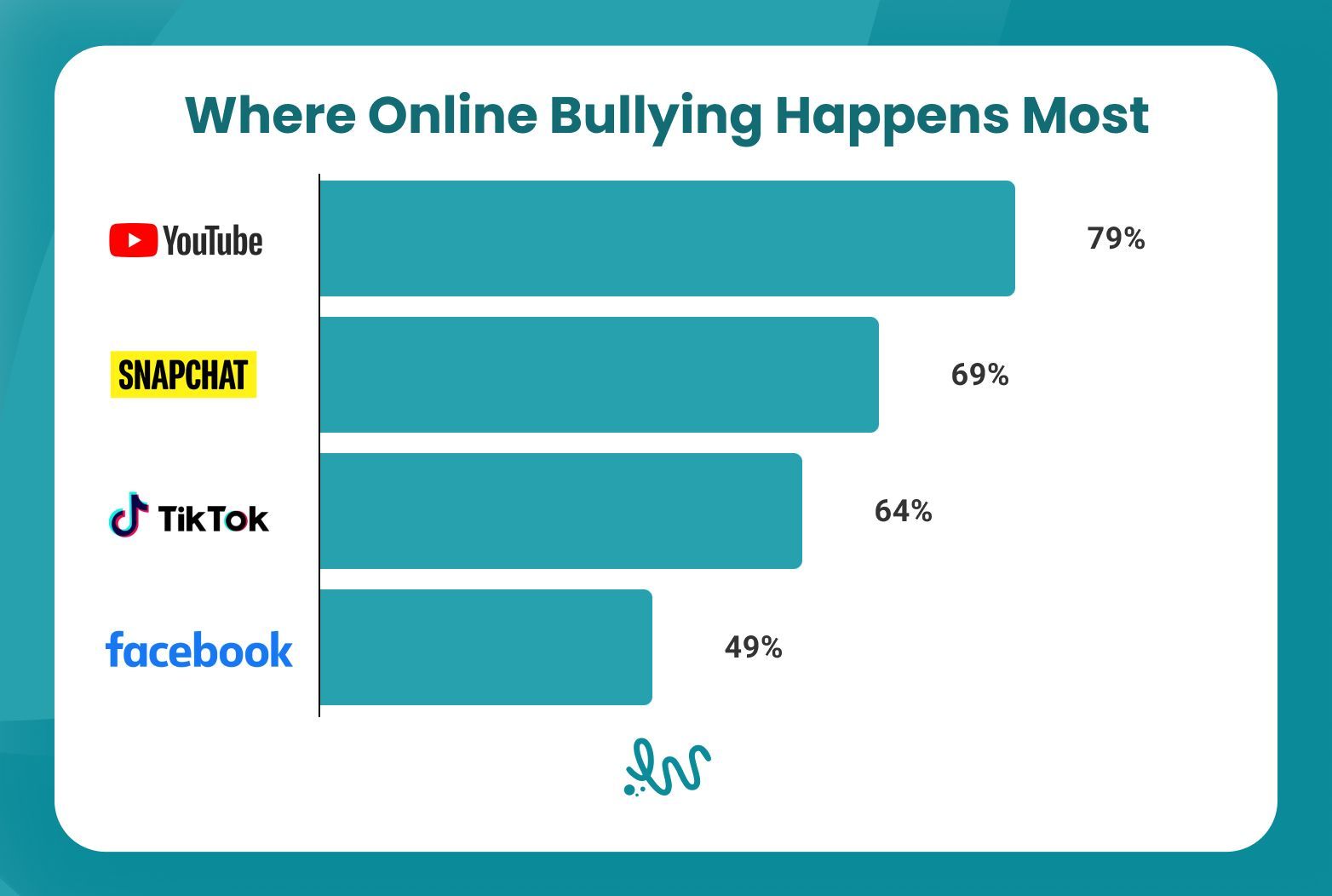
YouTube is the most common place where teens (79%) are getting bullied. Snapchat comes next at 69%, followed by TikTok at 64% and Facebook at 49%.
The good news is that social media companies are increasingly stepping in with tools that let users report and block harmful content/bullies. But none of it works unless people use them, and unless schools and parents talk about what’s happening behind the screen.
How Schools Are Fighting Back
Some schools don’t just talk about bullying. They do something about it.
- One of the most widely studied programs is the Olweus Bullying Prevention Program (OBPP). Originally started in Norway, it has since been used in schools across the U.S. Schools using OBPP have seen bullying drop by as much as 45%, and even more impressively, students report feeling safer and more supported.
- Finland’s KiVa program takes a different angle. It trains entire classrooms, not just the students being bullied, but everyone around them. That focus on bystanders has paid off. Schools using KiVa have seen long-term drops in bullying, along with more students speaking up when something’s wrong.
- In the U.S., Positive Action uses social-emotional learning to target the root causes of harmful behavior. The numbers are powerful: schools using the program saw bullying decrease by 41% and big drops in violence and substance use too.
Stuck on a Topic?
We’ve got you. Get personalized writing help, from outline to final draft.
Reach Out
What This All Tells Us
Bullying is a complicated, deeply personal issue, and a far too common one in schools. It’s important that we talk about it and back that talk with action. This way, we give students a shot at a safer future.
- Nearly 1 in 4 students still reports being bullied.
- Middle schoolers, girls, and LGBTQ+ students face higher risks.
- Classrooms are the most common place where bullying happens.
- Cyberbullying is rising fast, especially on YouTube, Snapchat, and TikTok.
- Evidence-based programs help reduce bullying by up to 45%.
And if you're working on a paper about bullying or need to make sense of the research, WriteMyEssay is here.
FAQ
How to Handle Bullying at School?
Telling a teacher, school counselor, parents, or other trusted adults is the first step. If it’s happening online, keeping records is a smart idea.
Are Schools Effective in Stopping Bullying?
Some are making real progress, especially those using proven programs and taking a whole-school approach. But results vary. The most effective schools build cultures where bullying has no room to grow.
Sources
- U.S. Department of Health and Human Services. (n.d.). Facts about bullying. https://www.stopbullying.gov/resources/facts
2. Pew Research Center. (2023, November 17). 9 facts about bullying in the U.S. https://www.pewresearch.org/short-reads/2023/11/17/9-facts-about-bullying-in-the-us/
3. Illinois Criminal Justice Information Authority. (n.d.). Youth bullying: An overview and related interventions. https://icjia.illinois.gov/researchhub/articles/youth-bullying-an-overview-and-related-interventions/



